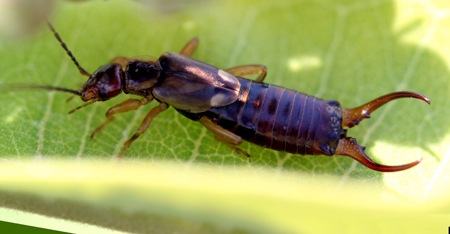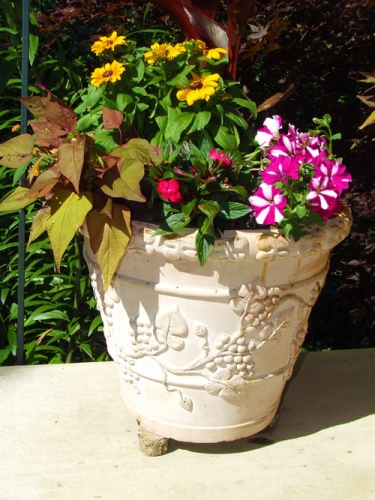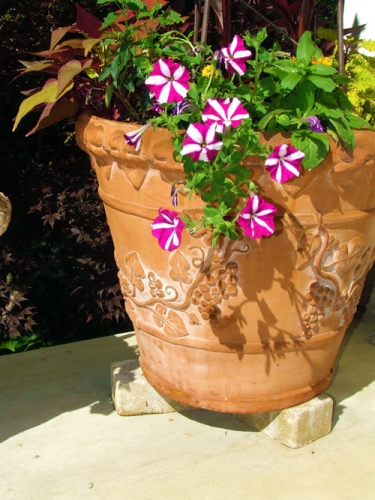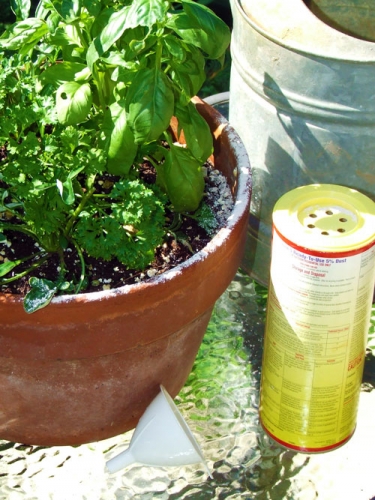Earwigs: Bane of summer garden plants
The key to combating ravenous earwigs in container plants is to dry out the environment.
During moist weather, earwigs and other pests gain momentum in the ideal conditions provided by moist, organic debris such as mulch around your home. Just looking at an earwig may creep out the faint of heart with their slender, brown bodies and menacing-looking pincers at the end of the abdomen.

Earwig. Photo credit: David Cappaert, MSU, Bugwood.org
Casual home invaders, these herbivores are also the bane of many summer garden plants. Tattered, ugly-looking plants result from earwigs consuming soft foliage found on favorites like coleus, basil and petunia. Because earwigs work during the nighttime hours, the culprits are often named incorrectly. Slugs (another serious pest) are often blamed for the damage.
Even container plants and hanging baskets are a target for earwigs since they are excellent climbers. A gardener once told me that she had lost nearly all of the foliage from her petunia hanging baskets, but could not find a pest. One night as a guest was leaving, she flipped on the porch light to witness hundreds of earwigs wriggling into crevices and diving into the eaves trough where they could hide.
Raise ‘em up, dry ‘em out
Earwigs also love to hide out under a container or rocks and other shady spots in the landscape. Lifting the container with a “foot” of some kind helps tremendously by drying out the conditions and making them assessable to predators such as rove beetles. Three bricks placed under a container in a wagon-wheel fashion will do the trick or you can make your own “feet” just by placing 1 inch of quick-drying cement into three to five Styrofoam cups. Once hardened, the feet can then be placed underneath the container like castors.


Elevate your containers by using bricks or cement “feet” to allow air to dry out
their hiding spots.
Covert control methods
Chemical controls can also be helpful, but finding a product that lasts long enough for them to intercept during their nightly raids will be the challenge. Sometimes, placement or coverage of a pesticide is equally as important as what product is chosen. At home, I have sprinkled a thin line of Carbaryl garden dust along the edges of my containers containing susceptible plants like coleus or basil. The thought is that the little buggers have to wiggle across the dust to get to the basil and will carry the pesticide home. This technique is not long-lasting and is easily washed away with rainfall, but if you apply it early in the summer, very few hatchlings will return.

Placement of a registered dust insecticide along the
rim of the container will help reduce populations.
Find out about other educational resources and classes at www.migarden.msu.edu and at Finneran’s blog. You can contact the MSU Master Gardener Lawn and Garden Hotline at 888-678-3464 with your questions.



 Print
Print Email
Email


